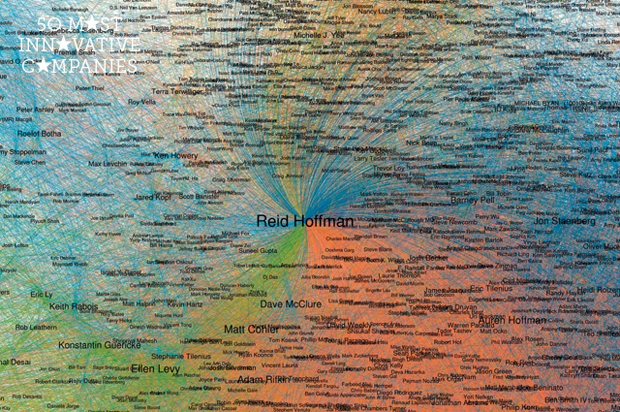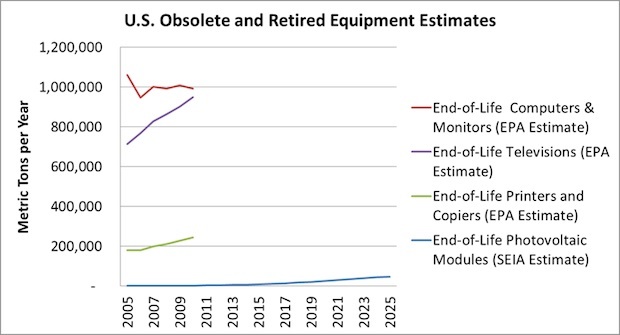The 10 Most Innovative Companies in Education
by: fast company, 2011-04-08 15:39:17 UTC

01 / NYU
For opening up a second campus in Abu Dhabi. There, NYU is shepherding the most successful and ambitious attempt yet to export overseas a full-fledged American liberal arts university.
02 / LinkedIn >>
For developing LinkedIn's Career Explorer, which offers users career path recommendations that are tailored to their interests and based on the real paths of professionals with similar profiles. CEO Reid Hoffman is also actively involved in the national conversations surrounding the future of education, and envisions his company as a 21st century diploma.
03 / Khan Academy
For building a collection of more than 1,800 short, simple video lectures and chalkboard demos that cover everything from math to physics to economics. The brain behind these web tutorials: Sal Khan, a 33-year-old Harvard MBA who developed the project out of his closet. Now, with Gates Foundation funding, he's taking his adaptive learning system to classrooms.
04 / Discovery Education
For leading the way in the digital learning movement by making video-based content that reaches more than half of all U.S. schools, including 1 million teachers and 35 million students. The company developing digital math and science curricula for public school students in Chicago and Detroit.
05 / Togetherville
For creating a social network built on top of Facebook for kids, families, and teachers that allows them to express their thoughts on educational issues. Roughly 90,000 U.S. schools are already included in its database.
06 / Autodesk Sustainability Workshop
For teaching mechanical engineers (for free) the principles behind sustainable design. The workshop is the brainchild of designer Dawn Danby, who has worked on furniture, urban planning, and retail systems projects.
07 / OpenStudy
For building a social learning network where students can ask questions, offer help, and connect with other students studying similar topics. Its mission is to make the world one large study group, regardless of students' locations or backgrounds.
08 / Irynsoft
For providing the first basic mobile platform that allows users to take a course on their iPhone. It has already been adopted by MIT Open CourseWare.
09 / Straighterline
For developing an online for-profit college where the first year costs $999.
10 / Inigral
For creating Facebook apps that help students stay in college by connecting them to a community of students who share their interests. Inigral also received the first-ever venture investment from the Gates Foundation.
Browse our list of The World's Most Innovative Companies 2011


 The Solar Industry Responds to Claims of Supply-Chain Dirtiness
The Solar Industry Responds to Claims of Supply-Chain Dirtiness
by: fast company, 2011-04-08 21:50:44 UTC

After we wrote about how many solar panel makers fared badly on The Silicon Valley Toxics Coalition's 2011 Solar Scorecard, the Solar Energy Industries Association (SEIA) nearly fell over itself to respond, telling us that the solar industry is cleaning up its act--and fast.
The scorecard--which rates solar providers on the cleanliness of their supply chains (i.e. recycling and use of toxic materials--received responses from just 46% of the photovoltaic industry market, perhaps in part because there is no green supply-chain standard for the industry, and companies are reluctant to expose their unregulated practices.
Just wait till next year, begs the SEIA. The industry association is rolling out a solar code of conduct later this year for companies that will have certain standards for solar module collection and recycling, extended producer responsibility (manufacturers of these materials have to implement systems for takeback and recycling), supply chain management (making sure business partners are handling materials appropriately from manufacture through recycling), and strict worker and fire-safety codes. So, the 2012 scorecard should have a much higher response rate and higher scores.
Even now, the SEIA says that the industry isn't as bad as the Solar Scorecard implies. Many companies--especially startups--still don't have takeback or recycling programs, but this won't be a problem for at least a decade since most solar panels last up to 25 years. That sounds eerily familiar to what an oil company might say about switching to renewables (we still have plenty of oil for now!), but it has the added benefit of being true. Check out the chart below for proof:

So, they have a few years to get this stuff together. And as for those complaints in the scorecard about companies using toxic lead and cadmium in their supply chains? It's a problem, but one that will hopefully be cleaned up by the solar code of conduct. "Right now the volume is so low compared to other electronic materials, but yes, it's a concern because this industry is about solving environmental problems, not creating new ones," admits Monique Hanis, the SEIA's communications director, stating a hugely obvious fact. Saying that solar panel pollution isn't a problem because there aren't that many solar panels doesn't shine a flattering light on the ambitions of the industry.
So the SEIA is aware that there is a problem, and it has plans to fix it before everyone starts tossing their toxic solar panels into landfills. There's little to complain about here--besides the existential problem that solar panels could possibly be bad for the environment. Provided, of course, that the solar code of conduct is up to snuff--we all know industries tend to be less than-tringent at regulating themselves.
[Photo by Shehal on Flickr]
Reach Ariel Schwartz via Twitter or email.


 Dennis Salazar's Big Impact on Green Packaging
Dennis Salazar's Big Impact on Green Packaging
by: Greener Design, 2011-04-05 18:56:51 UTC
Dennis Salazar hasn't just talked about making change in the packaging world. He's done it.

 Clever Devices Turn Trees into Natural Wind Turbines Bases
Clever Devices Turn Trees into Natural Wind Turbines Bases
by: Inhabitat , 2011-04-08 13:55:44 UTC

We all know wind turbines are a great way to harness emissions free energy, but some people just carry a distaste for their huge pylons, rotors and the way they look in juxtaposition to the landscape. But German architect Wolfgang Frey has come up with a great idea to do something about it – popping mini turbines on top of trees! Frey put a 3.5m diameter wind rotor atop a douglas fir to generate 5 to 6 kW. Despite the 30% power loss due to this particular placement in a canopy, the turbine still provides enough energy to supply the needs of the nearby houses, including Frey’s.
Permalink |
Add to
del.icio.us |
digg
Post tags: "wind power", "wind turbine", eco design, green design, green energy, sustainable design, tree turbine, Treetop Wind Turbines, wind energy, wolfgang frey
Peru to Open OLPC Factories, Will Distribute 1 Millionth XO Laptop by End of 2011
by: Inhabitat , 2011-04-08 15:18:24 UTC

Alan Garcia, the President of Peru, just announced that the country will be handing out their one millionth XO laptop by the end of this year and will soon be building manufacturing facilities to build the laptops locally. The One Laptop Per Child (OLPC) program created the XO laptop as an inexpensive tool for children around the world to learn with. The OLPC program in Peru has a goal to have laptops in 100% of the country’s public primary schools by the end of 2011.






Read the rest of Peru to Open OLPC Factories, Will Distribute 1 Millionth XO Laptop by End of 2011http://www.inhabitat.com/wp-admin/ohttp://www.inhabitat.com/wp-admin/options-general.php?page=better_feedptions-general.php?page=better_feed
Permalink |
Add to
del.icio.us |
digg
Post tags: education in peru, olpc, olpc distribution, One Laptop Per Child, peru, peruvian education, xo computer, xo laptop, xo laptop distribution, xo laptop program
Dell to Ship Servers in Mushroom-Based Packaging
by: Greener Design, 2011-04-05 18:03:04 UTC
Dell looks to nature for new packaging options.

 Seventh Generation, NatureWorks First to Earn USDA Biobased Label
Seventh Generation, NatureWorks First to Earn USDA Biobased Label
by: Greener Design, 2011-04-07 19:47:11 UTC
The USDA named the first 60 products that can carry a new label showing their bio-based content.

 P&G Scorecard Puts Supply Chain on Notice
P&G Scorecard Puts Supply Chain on Notice
by: Greener Design, 2011-04-07 18:11:39 UTC
P&G's supplier environmental scorecard will now affect how the company rates suppliers, with rewards going to those that perform well and bring in innovative ideas.

 Gravity Bike: A speedy motorcycle without an engine
Gravity Bike: A speedy motorcycle without an engine
by: The Design blog, 2011-04-07 22:25:39 UTC
Jaazhh:

Bikes are getting an all new form every now and then. The competition faced in terms of designing a bike has increased many folds. People want whatever they own should be different and eye-appealing and at the same time should promise good performance. Jeff Tiedeken is out with the latest Gravity Bike which is bound to give you an adrenaline rush.
With an ability to touch a speed of 70mph, it is nothing but swift. Resembling a motorcycle is this bike, the only difference being it does not have an engine. The bike has been built out of 4130 steel and is very curvy. Jeff has welded the bike in a marvelous and creative manner, which is his signature style. This wavy design has a 26” Crossmax Lefty wheelset coupled with a pair of Avid Elixr hydraulic disc brakes that endow it with deceleration. Giving it a motorcycle-style footpeg struts appearance are a pair of swap and cranks positioned toward the back. Jeff had to display the Gravity Bike at NAHBS this year but he was not allowed entry. So, he further worked on the bike to make it look all the more nice-looking.
Via: cycleexif


 HYDROGEN – A Fuel Savior
HYDROGEN – A Fuel Savior
by: Ecofriend, 2011-04-06 12:29:20 UTC
Vmumtaz:

A 2011 Mercedes Benz F-Cell Hydrogen Fuel-Cell Car
Hydrogen is one of the two main natural elements, which when combined together turns to H20, i.e. Water. In the past few years, hydrogen has been successfully utilized in fuel cells and batteries as a compact energy source. In future, it has a great potential to take place of crude fuels because it is a clean energy fuel and keeps our environment pollution-free when used. It also saves us from the undesirable side effects of green house gases.
Researchers and environmentalists have been continuously searching for a greener and cleaner fuel. Until now, they have put in a lot of energy and talent into hydrogen fuel, a fuel that will emit vapor and not a cloud of toxics. This is due to the fact that when hydrogen is burned, it only emits water vapor, and is considered an ideal solution to cut down 25 percent of all carbon emissions released.
Recently, an excellent technology for hydrogen usage as a fuel is developed by Cella Energy Ltd., a spin-off from Britain’s Rutherford Appleton Laboratory. It has been found that hydrogen could be released at a much rapid rate and at lower temperature than before. It is based on a way to produce nano-fibers from hydride, a compound of hydrogen with another element. Later these fibers are encapsulated into countless minute plastic beads, which act like liquefied hydrogen fuel. Therefore, it also means one can pump it like a fluid and it’s safe because it is not going to easily burst into flames.
Hydrogen comes with its drawbacks as well, mainly that its storage is not consumer-friendly. It requires being stored like other compressed natural gases. Also pure hydrogen is not found easily and requires to be manufactured. When it’s produced it is then used as an energy carrier. But, Cella Energy Ltd. does affirm that after a few modifications, their technology would allow people to use the de-carbonated fuel in their existing cars.
The liquid hydrogen could be easily pumped into the petrol tank of vehicles. When the vehicle starts up, the engine gets to initiate the heating of hydrogen and helps boost up to motion the vehicle. Also, the tiny beads reside back after the liquid hydrogen is utilized and gets accumulated in the vehicle. When the vehicle is refueled the waste beads are eliminated. Later these are recycled and again filled with hydrogen and are then used as liquid hydrogen fuel.
Till date, the hydrides have been successfully turned into fibers/beads, which are 30 times undersized than a human hair. This is done through a process called Electro-Spinning. These tiny beads can be controlled to capture and release hydrogen. The encapsulation, with tiny beads, protects the hydrides from oxygen and water, extending their life and making it feasible to handle safely in air. One can also carry the liquid hydrogen in tankers for later use.
With regular fuels, we fill vehicle tanks within minutes and zoom off; similar experience could be possible with liquid hydrogen now, which earlier was not found very promising with electric cars. Also, hydrogen has thrice more energy than per weight of petrol and could be used in vehicles that run on hydrocarbons.
Hydrogen, today, is used primarily for manufacturing chemicals, but a brighter future is predicted for it as a substitute for crude fuel. It is environment-friendly and has the potential to be a strong contender, especially with our over-dependence on crude; but several significant challenges must be overcome before it can be widely used.
Via: Reuters




Comments by our Users
Be the first to write a comment for this item.